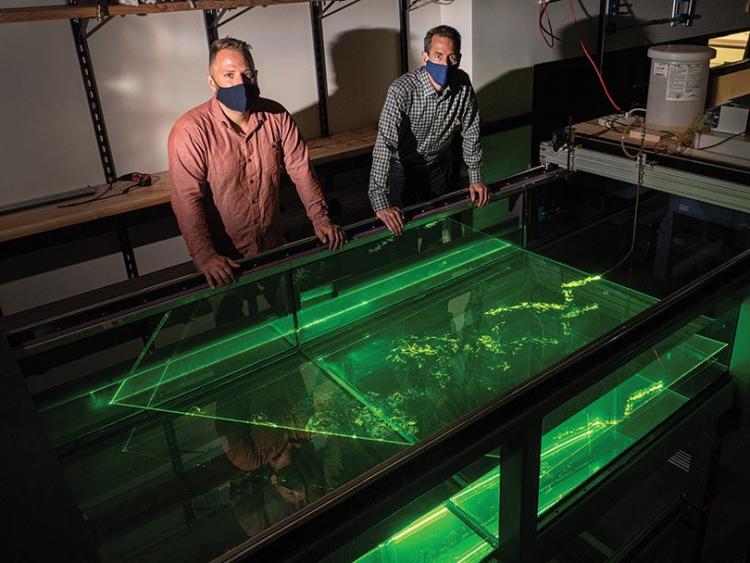What the Nose Knows

New international network explores how odors lead to actions
CU Boulder is leading a groundbreaking new international research network dubbed Odor2Action, which includes 16 scientists from 16 institutions around the world working together to better understand the brain and its evolution by reverse-engineering how it interprets odors. Part of the Next Generation Networks for Neuroscience (NeuroNex) Program, the five-year project is aimed at understanding how animals use information from odors in their environment to guide behavior, with far-ranging implications for our understanding of the human brain.
The network will examine all the steps involved in how an odor stimulus is encoded by the brain and then activates the motor circuits to produce a behavioral response in an animal. The model species they are working with, including fruit flies and mice, will help the researchers understand these same steps in humans.
“The chemical sensing process (i.e., smell) evolved in the very earliest life forms on Earth,” said John Crimaldi, lead principal investigator on the network and professor in the Department of Civil, Environmental and Architectural Engineering. “The idea here is that all brain evolution has taken place in the presence of chemical sensing. And so it’s thought to be a primal portal from which to view brain function.”
While Crimaldi and CU Boulder have previously received significant awards to research how animals find the source of an odor, this project is much broader and aims to understand the whole brain and the mechanism that goes into a behavioral response to smelling something.
Smell is the least understood sense, and humans have struggled to replicate odor-based searches with machines, Crimaldi said. Doing so, however, would allow robots to take over treacherous duties instead of humans or dogs, unlocking a new area of advancement for autonomous systems. These robots could one day rescue a person buried in an avalanche, locate valuable natural resources, or find chemical weapons and explosives on their own, for example.
This network is among the largest the College of Engineering has ever been involved in, said Keith Molenaar, interim dean of the College of Engineering and Applied Science. He said the work would result in transformational research around our understanding of the brain that could also lead to cures for diseases that connect to our sense of smell—or even understanding why loss of smell is a symptom of some diseases like COVID-19.
As an engineer, Crimaldi said he never expected to end up working in neuroscience, but it turns out a lot of engineering is involved in understanding what odors look like. He currently studies fluid mechanics from a theoretical perspective, using lasers in a nonintrusive way to measure flows—like odors—through air and liquids. He’s looked at everything from why coral reproduction underwater is successful to how animals can tell where a smell is coming from.
“Life forms have evolved to take advantage of specific opportunities and constraints that are imposed by their physical environment,” Crimaldi said. “I like to say we don’t just use physics to understand biology or ecology, or the brain. We also use evolutionary processes that have evolved in animals to help us understand details of what’s going on in the physical world.”
Principal investigator
John Crimaldi
Funding
National Science Foundation (NSF); Canadian Institutes of Health Research; UK Research and Innovation Medical Research Council
Collaboration + support
Arizona State University; Caltech; Duke University; Francis Crick Institute; Lehigh University; McGill University; NYU School of Medicine; Penn State University; Salk Institute; Scripps Research; University of Hertfordshire; University of Pittsburgh; University of Utah; Weill Cornell Medical College; and Yale University

